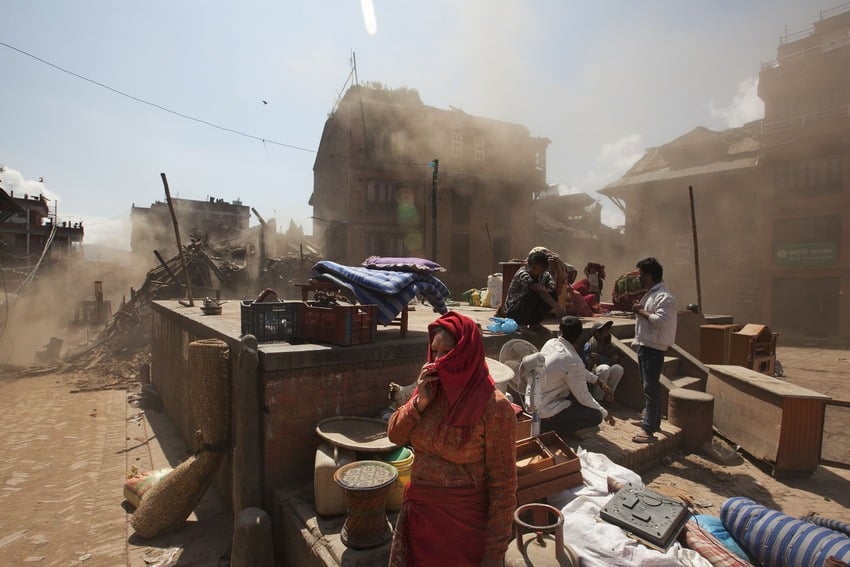Nepal’s government has decreed that developers can build cement factories, with a 3,000 tonnes capacity, without carrying out an environmental impact assessment.
Dr. Ramsharan Mahat, Nepal’s finance minister, said the decision will help reduce cement imports and help boost investment in roads and other infrastructure, as he announced his budget in parliament last week.
This is not the only recent government decision that has undermined the country’s environmental laws.
Last month, Nepal’s president agreed to establish a new authority to oversee earthquake reconstruction with a mandate to implement development projects without carrying out environmental impact assessments, which are mandatory under the country’s environment protection act.
“Laws related to land acquisition, public procurement and environmental impact assessment will not be applicable in earthquake hit areas,” the president’s ordinance to the new reconstruction authority stated.
Environmentalists say the government’s decision was influenced by industry groups who have fought against mandatory environmental assessments for some long time.
“Industrialists are trying to ruin the environmental sector by bribing the corrupt government which is not acceptable,” said Salil Devkota, an environment expert at Nepal Environment and Scientific Services, a private consultancy firm.
The death toll from the 7.9 magnitude earthquake in April and subsequent aftershocks has reached about 10,000. Three million people have been displaced and 800,000 houses damaged or destroyed.
“It’s against the state’s promises to maintain environmental standards and it’s against its own environment act,” said Madan Koirala, a professor at Tribhuvan University’s environmental science department and president of the Nepal Environment Society.
It is not only environmentalists who are outraged. Authorities within the government are also deeply concerned. “It wasn’t discussed with the environment ministry and we want it to be revoked, so we are discussing amongst ourselves how to move forward,” said Dr. Suroj Pokhrel, director general of the department of environment at the Ministry of Science, Technology and Environment.
The earthquake caused an estimated US$7 billion worth of damage –one third of Nepal’s Gross Domestic Product (GDP). Other countries have pledged to give Nepal US$3 billion to help with reconstruction through a mixture of grants and loans. The Nepal government allocated about US$750 million in its latest budget—almost 10% of the total.
“We are willing to search for options to make the procedure for environmental assessments shorter and easier, but the decision to waive requirements will ultimately put already vulnerable communities at further risk,” added Pokhrel.
Environmental laws: weak but worthy
Many people argue that Nepal’s EIA process is merely a paper tiger, due to the inefficiency and weak monitoring of government bodies.
However, paper laws are better than nothing. “The EIA process maybe weak but it doesn’t mean we have to waive it,” said Dr. Dinesh Chandra Devkota, former vice-chairman of the National Planning Commission.
It has been mandatory to conduct EIAs before starting development project since the late 1990s, when the country introduced its first environmental protection act.
“We are meeting with the officials at the environment ministry this week to demand they scrap decisions that will have negative implications for generations in the future,” said Madan Koirala, professor of environmental science at Tribhuvan University and president of the Nepal Environment Society.
The Ministry of Environment—the sole body responsible for reviewing EIAs —has little political clout and is severely under resourced – both in terms of human and financial resources.
According to ministry officials, less than half a dozen officers handle EIAs, which involve very technical and complex issues and range from big hydropower projects to small irrigation projects, from hospitals to industrial projects.

